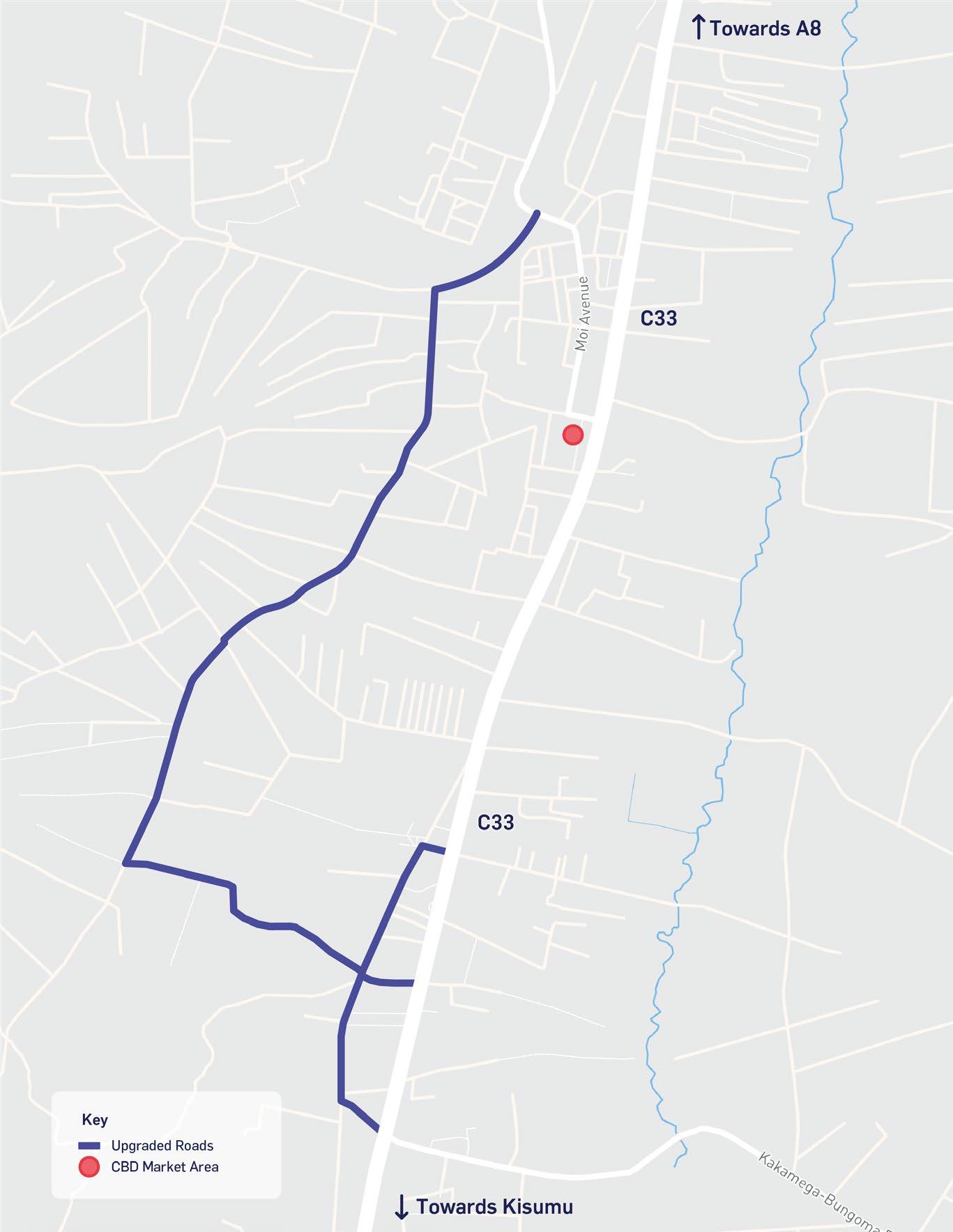1 minute read
Figure 4-32 – Typical features of an accessible toilet block
4.3.3.2 Project 6: Accessible public toilet blocks Project Overview
Public toilets in the County typically do not meet the requirements of women and girls, nor PWD88. Failing to plan, design or manage public toilets to ensure they are female-friendly and accessible to all users restricts the movement of women and girls, as well as older people and PWD, and limits their ability to participate in public life89 .
The redevelopment of Bungoma CBD, as well as the development of the airstrip land in Focus Area 2, provides an opportunity to ensure that accessible public toilets are constructed to meet the sanitation needs of the people using the CBD and its markets as well as those who travel into the area for business and leisure activities. The toilets must be safe and private, make provision for menstrual hygiene, be accessible to all users, be affordable, meet the requirements of care-givers and parents, and must be well-maintained and managed.
88 UNICEF, WaterAid and WSUP (2018). Female-friendly public and community toilets: a guide for planners and decision makers. WaterAid: London,
UK. Available at: https://www.wateraid.org/us/sites/g/files/jkxoof291/ files/Female_friendly_toilet_guide.pdf, (Accessed: 07/02/2022). 89 UNICEF, WaterAid and WSUP (2018). Female-friendly public and community toilets: a guide for planners and decision makers. WaterAid: London,
UK. Available at: https://www.wateraid.org/us/sites/g/files/jkxoof291/ files/Female_friendly_toilet_guide.pdf, (Accessed: 07/02/2022). The toilet blocks can be connected to the Bungoma sewer network and wastewater can be treated at the Bungoma sewage treatment works. Given the issues with reliable water supply the toilet blocks should seek to employ water efficiency measures such as water-saving flushes and recycling handwashing water to flush toilets.
There is an opportunity for the toilets to be run by a small business whereby an operator is appointed and collects an affordable fee per use. The fee pays for running costs such as the water, the sewerage fees and maintenance plus provides a wage for the operator. This arrangement provides an incentive, and funds for the operator to ensure the facilities are functioning and providing a service to the community. The County may want to further subsidise particularly vulnerable or low-income people or give them a free pass.
Figure 4-32 – Typical features of an accessible toilet block

Source: WaterAid, Female-friendly public and community toilets: a guide for planners and decision makers (2018).










